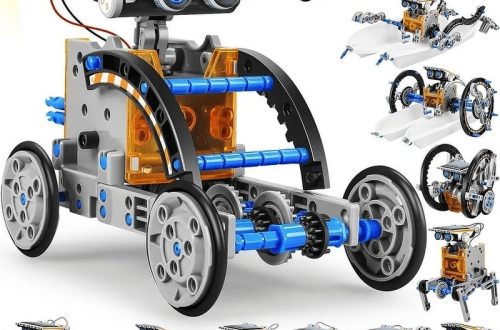The battery is the beating heart of your RC car, supplying the power to unleash its potential on the track. Choosing the right battery can significantly impact your car’s performance, giving you that extra edge in speed, handling, and overall driving experience. This guide delves into four key factors to consider when selecting the perfect battery for your RC car, ensuring you get the most out of every race or backyard adventure.
Part 1: Battery Technology – Understanding Your Options

Lithium Polymer (LiPo) vs Nickel Metal Hydride (NiMH):
LiPo batteries are the reigning champions in the RC world. They offer superior power output, higher energy density (resulting in lighter weight), and longer lifespans compared to NiMH batteries. This translates to faster acceleration, higher top speeds, and extended run times for your RC car. NiMH batteries, while not the most powerful option, are a more budget-friendly choice. They are generally more forgiving of charging mistakes and require less maintenance than LiPo batteries. This makes them a good option for beginners or those looking for a less demanding battery solution.
Hardcase vs Softcase LiPo Batteries:
Hardcase LiPo batteries feature a rigid plastic exterior that protects the battery cells from impact and punctures. This added protection comes at the expense of slightly more weight, but it’s a worthwhile trade-off for safety and durability, especially for high-performance applications. Softcase LiPo batteries are lighter and more flexible due to their absence of a hard case. This can be beneficial for achieving a lower center of gravity in your RC car, improving handling. However, they require more careful handling to avoid damage to the battery cells.
Part 2: Key Battery Specifications – Matching Power to Performance

Voltage (V):
The voltage of a battery, measured in volts, directly influences the overall power output it can deliver to your RC car’s motor, significantly impacting speed and acceleration. Higher voltage batteries can provide increased power, resulting in faster speeds and stronger acceleration, enhancing the overall performance of the RC car. However, it is paramount to ensure that the motor and electronic speed controller (ESC) of your car are compatible with the selected voltage to avoid potential damage. Consulting your RC car’s manual for recommended voltage specifications is crucial to guarantee compatibility and prevent any adverse effects on the vehicle’s electronic components. Common voltage options for RC cars include 7.4V (2S LiPo), 11.1V (3S LiPo), and 14.8V (4S LiPo), each catering to different performance needs and motor requirements.
Capacity (mAh):
Capacity (measured in milliamp-hours) indicates the amount of electrical charge a battery can store, directly affecting your RC car’s run time. Higher capacity batteries will provide longer durations of operation on a single charge.
Finding the right balance between capacity and weight is essential. While a high capacity battery offers extended run time, it can also add unwanted weight to your RC car, potentially affecting handling. Consider your driving style and prioritize capacity if you prefer longer stints behind the wheel.

Part 3: Considering Additional Factors – Safety and Maintenance
Battery Discharge Rate (C Rating):
The discharge rate, commonly referred to as the “C rating,” is an essential factor that denotes the maximum rate at which a battery can safely discharge its stored energy. When considering the C rating, it’s important to understand that a higher C rating indicates the battery’s capability to deliver a greater current (measured in amps) to the motor.
Matching the C rating of your battery to your RC car‘s motor and application is crucial for achieving optimal performance and ensuring the longevity of both the battery and the motor. In particular, high-performance motors, which typically draw increased current during operation, necessitate batteries with higher C ratings to effectively manage the elevated current demand, thus preventing potential damage to the battery and ensuring sustained performance. By aligning the C rating with the specific demands of your RC car’s motor, enthusiasts can effectively optimize the power delivery, ultimately enhancing the overall performance and durability of their RC car’s electrical system.
Safe Charging and Handling Practices:

When dealing with LiPo batteries, it’s crucial to utilize chargers specifically designed for their chemistry. This is essential as using an incompatible charger can result in overcharging or overheating, which in turn may damage the battery or pose a fire hazard. Therefore, it’s imperative to adhere to the manufacturer’s recommended charging and storage guidelines. Additionally, as an added safety measure during charging and storage, investing in a LiPo safety bag is advisable. These specially designed bags are constructed to contain and mitigate the potential impact of a malfunctioning battery, providing an additional layer of protection. By following these critical safety protocols and utilizing the appropriate charging equipment, RC enthusiasts can help ensure the safe and efficient operation of their LiPo batteries, mitigating the potential risks associated with their use and storage.
Part 4: Conclusion – Putting it All Together
Selecting the ideal battery for your RC car requires a comprehensive understanding of your vehicle’s capabilities, your driving preferences, and the specific performance attributes you prioritize. Factors such as the type of RC car you own, its power requirements, and your typical usage patterns all play a crucial role in guiding your battery choice. By carefully evaluating these elements, enthusiasts can make informed decisions that align with their driving style, safety considerations, and desired performance outcomes. This thoughtful approach enables RC car owners to optimize their vehicle’s power delivery, endurance, and overall performance, ultimately enhancing their driving experience. By recognizing and prioritizing these factors, enthusiasts can confidently select a battery that caters to their specific needs, fostering a safe and enjoyable RC car driving experience while aligning with their unique driving style and performance preferences.

Here’s a quick recap:
LiPo batteries offer superior performance but require more care; NiMH batteries are a budget-friendly option but deliver less power.
Hardcase LiPo batteries provide better protection, while softcase LiPo batteries offer weight savings and flexibility.
Match voltage to your car’s specifications and choose capacity based on desired run time.
Higher C ratings are suitable for high-performance motors.
Always prioritize safe charging and handling practices with LiPo batteries.


